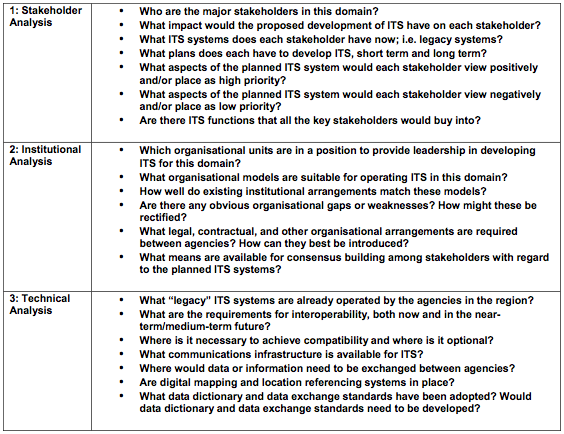
Road Network Operations
& Intelligent Transport Systems
A guide for practitioners!

Road Network Operations
& Intelligent Transport Systems
A guide for practitioners!
Resolving the institutional issues needs to proceed in parallel with the technical aspects of ITS project planning. The specific ITS development must be assessed for its feasibility and desirability in the local context - from both a technical and non-technical perspective. There is usually more than one way to implement an ITS project - for example:
The type of implementation chosen will be governed by many factors. Some key inputs are listed in the figure below.

The ITS Road Map is a means of translating concepts and plans into reality. It assigns roles and responsibilities and specifies how stakeholders can organise themselves to implement the recommendations of the Framework Plan. The following is a checklist of topics which will need to be addressed:
Human Resources
Contractual and Legal Requirements